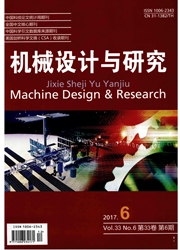

 中文摘要:
中文摘要:
生物陶瓷在人体组织、器官替换,修复及功能完善等生物医疗领域具有广泛的应用,但由于陶瓷材料的高硬度和高脆性,使得它的加工相比金属就困难许多,而且直接将其用于人体需要高的表面质量。利用正交试验进行磨料水射流抛光生物陶瓷实验,通过对实验数据的极差分析和方差分析找到抛光的最佳工艺参数组合,通过响应面回归分析,得到表面粗糙度关于加工工艺参数变量的回归模型,并探讨3-艺参数与抛光后生物陶瓷表面质量之间的关系。基于遗传算法对工艺参数进行进一步优化,得到最小表面粗糙度值对应的最佳工艺参数值,并通过实验进行了验证。
 英文摘要:
英文摘要:
Bio-ceramics has wide application in terms of biological medical field, such as human tissues, replacing organs and repairing/improving special functions. However, because of the high-hard and high-brittle properties of ceramic materials, this makes processing much more difficult than metal processing. Furthermore, materials directly used for human body needs high surface quality. Using orthogonal design method conducts experimental study of abrasive water jet polishing bio-ceramic surfaces, meanwhile range analysis and variance analysis by a combination of experimental data are applied to find the optimum combination of parameters for polishing. Establish a surface roughness prediction model of about five process variables using response surface regression analysis and explore the relationship between process parameters and surface quality of ceramic after being polished. The process parameters are optimized further based on genetic algorithm and we obtain the optimum parameter values corresponding to the minimum surface roughness, which is verified experimentally.
 同期刊论文项目
同期刊论文项目
 同项目期刊论文
同项目期刊论文
 期刊信息
期刊信息
